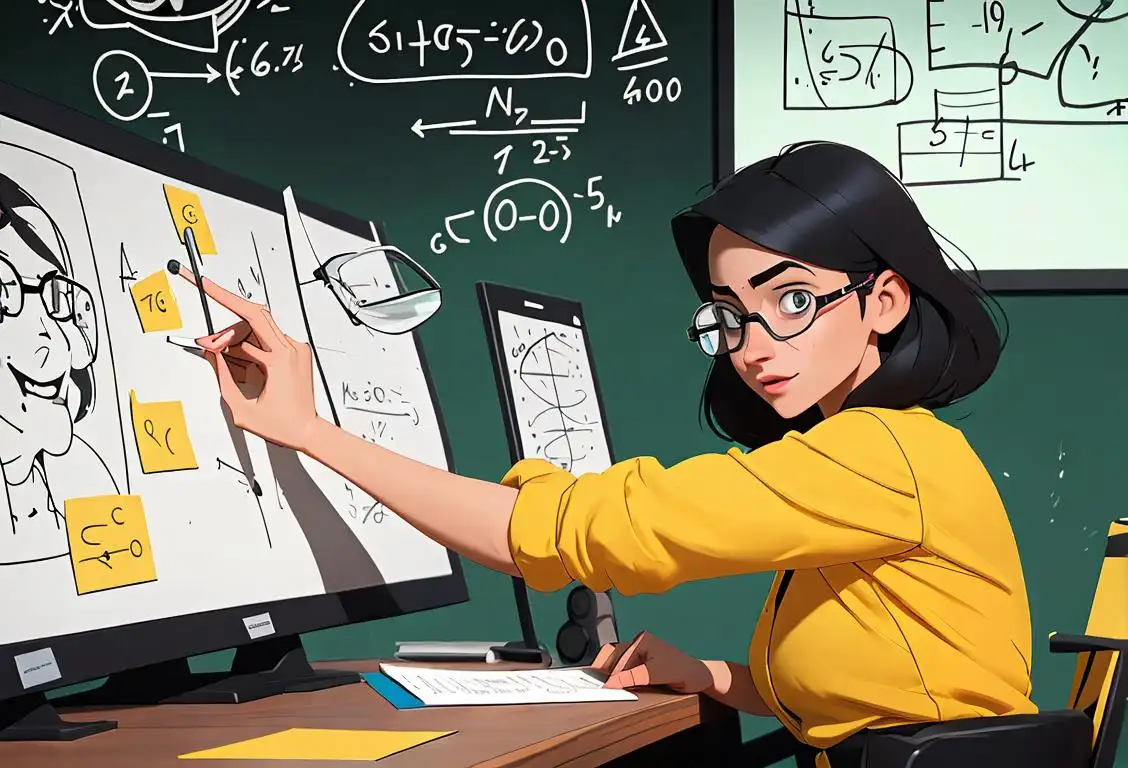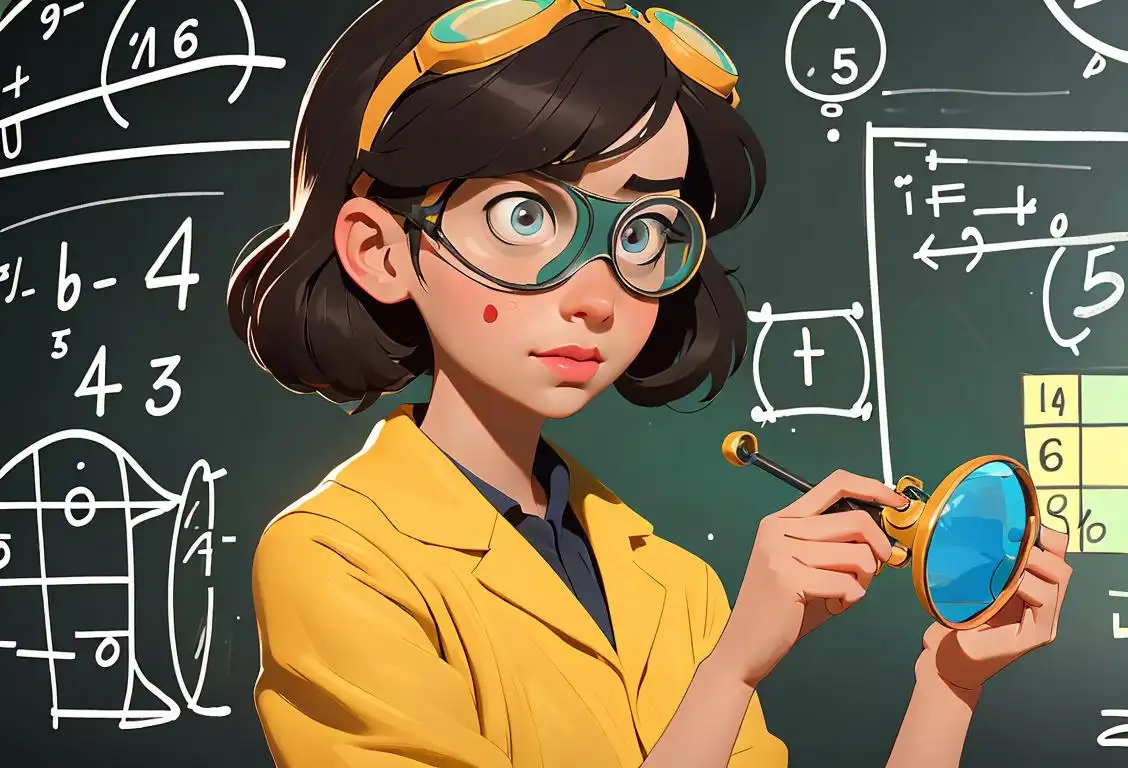National Ada Lovelace Day

Did you know that October 9th is National Ada Lovelace Day? Get ready to celebrate the incredible accomplishments of a true trailblazer in the realm of computer programming!
When is Ada Lovelace Day?
It's national ada lovelace day on the 27th September.
The Amazing Ada Lovelace
Ada Lovelace, born on December 10, 1815, was an English mathematician and writer. She is widely regarded as the world's first computer programmer, and her contributions to the field were truly groundbreaking. Ada had a unique way of thinking about technology, envisioning a world where machines could do much more than simple calculations.
Now, you may wonder what Ada Lovelace had to work with back in the 1800s when computers were nothing more than a figment of imagination in science fiction novels. Well, Ada was fortunate enough to cross paths with Charles Babbage, who was a mathematician and inventor of mechanical computers.
Together, Ada and Babbage collaborated on the designs for a huge mechanical computer called the Analytical Engine. It was Ada who recognized that this machine had the potential to do more than just calculate numbers, envisioning that it could create anything that could be expressed algorithmically. In other words, she saw the future of computing!
Celebrating Ada Lovelace Day
Ada Lovelace Day is all about recognizing and celebrating the achievements of women in science, technology, engineering, and mathematics (STEM). It serves as a reminder that women have made significant contributions to these fields throughout history, even during times when they faced adversity and discrimination.
To honor Ada Lovelace and her legacy, people all around the world organize events, workshops, and conferences to encourage and inspire more women to pursue careers in STEM. It's a day filled with talks, panel discussions, and networking opportunities, all aimed at spreading awareness and bridging the gender gap in these male-dominated fields.
Did You Know?
On Ada Lovelace Day, did you know that schools and universities often organize coding competitions and hackathons? It's a fantastic way to get people of all ages involved and provide a platform for aspiring programmers to showcase their skills. Who knows, you might just witness the birth of the next Ada Lovelace!
History behind the term 'Ada Lovelace'
1815
Birth of Ada Lovelace
Ada Lovelace was born on December 10, 1815, in London, England. As the daughter of the famous poet Lord Byron and mathematics enthusiast Lady Anne Isabella Milbanke, Ada had a unique upbringing that combined her father's creative spirit with her mother's emphasis on mathematics and logic.
1815
Birth of Ada Lovelace
Ada Lovelace, born Augusta Ada Byron on December 10, 1815, in London, England, was the daughter of the renowned poet Lord Byron and mathematician Anne Isabella Milbanke. Ada's upbringing in a household filled with creativity and intellectual curiosity greatly influenced her future pursuits.
1828
Mathematics tutoring by Augustus De Morgan
At the age of 13, Ada Lovelace began receiving private mathematics lessons from Augustus De Morgan, a prominent mathematician and logician of the time. Under De Morgan's mentorship, Ada developed a deep passion for mathematics and logic, laying the foundation for her future achievements.
1833
Introduction to Charles Babbage
In 1833, Ada met the renowned mathematician and inventor Charles Babbage at a party hosted by her mentor, Mary Somerville. Babbage was working on his revolutionary Analytical Engine, a precursor to the modern computer, and Ada became fascinated by his ideas. This encounter sparked Ada's interest in the potential of machines to perform complex calculations and laid the foundation for her later achievements.
1842
Translation of Luigi Menabrea's Analytical Engine paper
In 1842, Ada Lovelace translated an article titled 'Sketch of the Analytical Engine Invented by Charles Babbage' written by the Italian engineer Luigi Menabrea. While translating, Ada added extensive notes and annotations that surpassed the original work in both length and complexity. These notes, often referred to as the 'Notes by the Translator,' included an algorithm for calculating Bernoulli numbers. Ada's contribution to the paper revealed her deep understanding of the concept of a general-purpose computing machine and became her most significant work.
1833
Connection with Charles Babbage
In 1833, Ada Lovelace attended a party where she met Charles Babbage, an inventor and mathematician known for his work on the concept of a programmable computer called the Analytical Engine. This encounter would prove instrumental in shaping Ada's contributions to computing history.
1842
Translation of Luigi Menabrea's work
In 1842, Ada Lovelace translated an article written by Italian mathematician Luigi Menabrea about Charles Babbage's Analytical Engine. During the translation process, Ada decided to add her own extensive notes to the article, which ended up being three times longer than the original publication.
1843
Publication of Ada Lovelace's Notes
In 1843, Ada's annotated translation of Menabrea's paper, including her added 'Notes by the Translator,' was published. Though Babbage considered his Analytical Engine as a tool for number crunching, Ada expanded on its potential, highlighting its capability to manipulate symbols and perform tasks beyond pure mathematics. Ada's visionary insights made her the world's first computer programmer, as she grasped the potential of computers for more than just numerical calculations.
1953
Ada's recognition and the term 'Ada Lovelace'
More than a century after Ada Lovelace's contributions, her work gained recognition. In 1953, the computer programming language 'Ada' was named in her honor by the United States Department of Defense. This gesture acknowledged her brilliance and laid the groundwork for future generations of programmers to engage with her ideas. The term 'Ada Lovelace' became synonymous with women's contributions to science, technology, engineering, and mathematics (STEM), and serves as a reminder of her pioneering role in the field of computing.
1843
Publication of Ada's notes
In 1843, Ada Lovelace's detailed notes, which included a method for calculating Bernoulli numbers using Babbage's Analytical Engine, were published alongside Luigi Menabrea's article. Although Menabrea's paper mostly described the machine's functions, Ada's notes explored the potential of the Analytical Engine for artistic and scientific purposes, making her a pioneer in the field of computer programming.
1843
Prophecy of computer's potential
Ada Lovelace's most remarkable insight was her prediction that Babbage's Analytical Engine had the potential to go beyond mere number-crunching, stating that the machine could manipulate symbols and create music or art. Her visionary ideas on programming and the future capabilities of computers mark her as a visionary figure in the history of computing.
1953
Recognition and celebration
In 1953, more than a century after her death, Ada Lovelace's contributions to computing were recognized by her inclusion in Dorothy Hodgkin's article titled 'Early Computers and Their Impact.' Since then, Ada's legacy has been increasingly celebrated, leading to the establishment of Ada Lovelace Day in 2009, a day dedicated to celebrating the achievements of women in science, technology, engineering, and mathematics (STEM).
Did you know?
On Ada Lovelace Day, did you know that schools and universities often organize coding competitions and hackathons? It's a fantastic way to get people of all ages involved and provide a platform for aspiring programmers to showcase their skills. Who knows, you might just witness the birth of the next Ada Lovelace!Tagged
awareness technology STEMFirst identified
27th July 2018Most mentioned on
27th September 2018Total mentions
73Other days
Ada Lovelace Day
Hydropower Day
Women In Engineering Day
Dam Safety Awareness Day
Hydrogen And Fuel Cell Day
Computer Security Day
Stem Day
Manufacturing Day
Battery Day
Indexing Day








